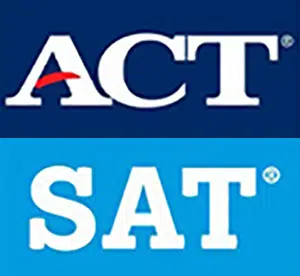Scripps College
Scripps College is a prestigious private liberal arts women’s college located in Claremont, California. The college was established in 1926. Scripps has continued to champion qualities of both mind and spirit in accordance with the vision of its founder, newspaper entrepreneur, and philanthropist Ellen Browning Scripps. The college has a long-standing reputation for providing a rigorous and challenging academic program that fosters intellectual curiosity, critical thinking, and analytical skills in its students. Scripps College is committed to offering a well-rounded education that encompasses both traditional and contemporary fields of study, with a focus on the humanities, social sciences, and interdisciplinary programs. With a strong emphasis on community, diversity, and social responsibility, Scripps College aims to cultivate leaders who will make a positive impact in their fields of expertise and in society as a whole.
Location
Scripps College is located in Claremont, California near the foothills of the San Gabriel Mountains. Los Angeles is just 35 miles to the west, and within 50 miles of the campus lies all that Southern California has to offer—from academic and cultural centers, theme parks and attractions to the desert, mountains and beaches. Scripps’ 32-acre campus is listed in the National Register of Historic Places and is widely recognized as one of the most beautiful college campuses in the world. The campus was designed by renowned architect Gordon Kaufmann. It features Spanish-style buildings and lush gardens, creating a serene and inspiring environment for learning and personal growth.
Student Cohort Size
Scripps College has 1082 full-time undergraduate students and 20 post-baccalaureate students. There are 95% domestic and 5%international students. The accepted students come from 47 states and 21 countries. 42.3% of students are from outside of California.
Admission
Acceptance Rate
Scripps College is a highly selective college with an acceptance rate of 27.6%. 97.78% of first-year students were in the top quarter of their high school class. Scripps students annually win research and fellowship grants from the Fulbright Foundation, National Science Foundation, and the Watson Fellowship program.
Acceptance GPA
90% of students admitted to Scripps College have a high school GPA of more than 3.75.
Types of Admission
The students can apply through the Early Decision and Regular Decision cycles. Early Decision is an opportunity for students to show that Scripps is their number one choice. Early Decision is a binding process and it implies that the students should attend Scripps College if accepted. The students also have the option to apply through the Regular Decision process.
Students also have the option of opting to take an interview. An interview gives the students a chance to discuss their passions and goals with the admissions officers.
Application Components
Complete the Common App
School Report
Counselor Recommendation
Official High School Transcript: This should include your midyear Report after your first term of senior year.
Standardized Test Scores: Scripps College is test optional. However, the accepted students had an SAT score of more than 1400 and an ACT score of more than 32.
Two Letters of Recommendation: The letters should be written by junior or senior year teachers of core academic subject areas like English, foreign languages, math, science or social sciences.
Essays:
Prompt 1: Why have you chosen to apply to Scripps College? (200 words)
Prompt 2: Choose one of the following:
Option A: If you could trade lives with someone (fictional or real) for a day, who would it be and why? (150-300 words)
Option B: You’ve invented a time machine! When and where is your first destination and why? (150-300 words)
Option C: You have just been invited to host your own podcast. What will you talk about and why did you select that topic? (150-300 words)
Academics
A Scripps liberal arts education begins with the Core Curriculum in Interdisciplinary Humanities. The Core is designed to introduce the students via interdisciplinary study to some of the major debates and concepts that have shaped the modern world. Students can choose from 65 majors and programs of study at Scripps College, the W.M. Keck Science Department, and The Claremont Colleges.
Most Popular Majors at Scripps College:
Art
Biology
Economics
English
Environmental Analysis
Human Biology
Media Studies
Neuroscience
Politics
Psychology
Special Academic Programs
W.M.Keck Science Department: The W. M. Keck Science Department of Claremont McKenna College, Pitzer College, and Scripps College allows students to fulfill the college requirements in science and to pursue advanced studies as majors in various related fields. The students interested in biology, physics, and chemistry can have a better understanding and they get the opportunity to delve deeper into the subject. A major in neuroscience is also available for Scripps students who wish to pursue a multidisciplinary study of the biological bases of behavior.
5-College Programs: Students get the opportunity to pursue a major offered by another Claremont College. Some of the courses that the students could take at other colleges are:
Asian Languages (Pomona College)
Computer Science (Harvey Mudd College)
Computer Science (Pomona College)
Economics-Accounting (Claremont McKenna College)
Geology (Pomona College)
Linguistics (Pitzer College)
Linguistics (Pomona College)
Organizational Studies (Pitzer College)
Russian (Pomona College)
Sociology (Pitzer College)
Sociology (Pomona College)
Faculty/Students Ratio
The student/faculty ratio at Scripps College is 10:1. The smaller class sizes help create a collaborative and unique academic environment. The students get the expertise of accomplished scholars and researchers. The faculty members are driven and they help their students succeed.
Four-Year Completion Rate
Scripps College has a high retention rate of 91%. This implies that freshmen students continue their education at Scripps College. The graduation rate of Scripps College is 90%. A higher percentage of students complete their graduation on time.
Activities
The students have the option of participating in some of the following activities:
-
Choral Groups
-
Dance
-
Drama/Theater
-
International Student Organization
-
Literary Magazine
-
Model UN
-
Music Ensembles
-
Musical Theater
-
Radio Station
-
Student Government
-
Student Newspaper
-
Symphony Orchestra
-
Yearbook
Cost of Attendance
Tuition $31,608
Housing $5,695
Student Body Fee $109
Total $42,216
One Class $7,902
Food Cost
Students living in a residence hall are required to have a meal plan. You are billed according to the meal plan the student chooses. There are four options:
19 meal plan: $4,970.00 per semester with $190.00 flex plus
16 meal plan: $4,804.00 per semester with $160.00 flex plus
14 meal plan: $4,645.00 per semester with $140.00 flex plus
12 meal plan: $4,486.00 per semester with $120.00 flex plus
FUN FACT:
“Scripps Tea” is a college tradition that started in 1931. Every Wednesday afternoon students, faculty, and staff gather at Scripps’ Seal Court to convene, relax, and enjoy interesting conversation. Scripps’ famous chocolate bread pudding is always a crowd favorite.
In conclusion, Scripps College is an exceptional institution that provides a transformative educational experience for women who seek to become leaders in their chosen fields. Its academic programs are designed to challenge students intellectually, encourage critical thinking and analytical skills, and provide them with the tools they need to excel in their careers. With a beautiful campus, dedicated faculty, and a vibrant student body, Scripps College continues to set the standard for excellence in higher education and remains a top choice for women seeking a liberal arts education.







